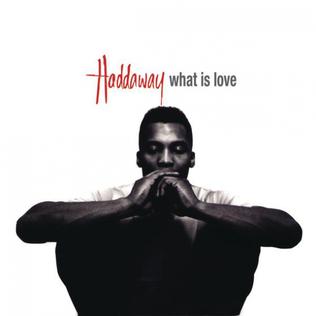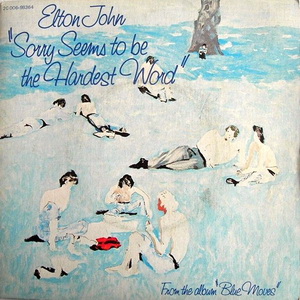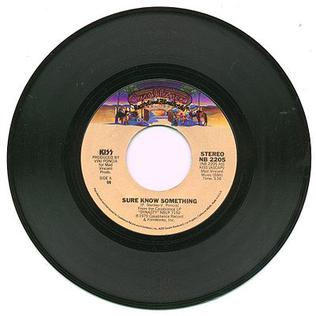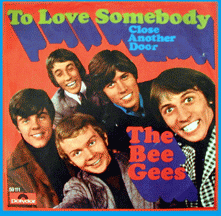
"My Girl" is a soul music song recorded by the Temptations for the Gordy (Motown) record label. Written and produced by the Miracles members Smokey Robinson and Ronald White, it became the Temptations' first U.S. number 1 single, and is currently their signature song. Robinson's inspiration for writing "My Girl" was his wife, Miracles member Claudette Rogers Robinson. The song was included on the Temptations 1965 album The Temptations Sing Smokey. In 2017, the song was selected for preservation in the National Recording Registry by the Library of Congress as being "culturally, historically, or artistically significant".

"I Will Always Love You" is a song written and originally recorded in 1973 by American singer-songwriter Dolly Parton. Written as a farewell to her business partner and mentor Porter Wagoner, expressing Parton's decision to pursue a solo career, the country single was released in 1974. The song was a commercial success for Parton, twice reaching the top spot of the US Billboard Hot Country Songs chart: first in June 1974, then again in October 1982, with a re-recording for The Best Little Whorehouse in Texas soundtrack.

"D'You Know What I Mean?" is a song by English rock band Oasis. Written by Noel Gallagher, it was released on 7 July 1997 as the first single from their third album, Be Here Now (1997).

"Night Fever" is a song written and performed by the Bee Gees. It first appeared on the soundtrack to Saturday Night Fever on RSO Records. Producer Robert Stigwood wanted to call the film Saturday Night, but singer Robin Gibb expressed hesitation at the title. Stigwood liked the title Night Fever but was wary of marketing a movie with that name. The song bounded up the Billboard charts while the Bee Gees’ two previous hits from Saturday Night Fever soundtrack were still in the top ten. The record debuted on the Billboard Hot 100 Chart at #76, then leaped up 44 positions to #32. It then moved: 32–17–8–5–2–1. It remained at #1 for eight weeks, and ultimately spent 13 weeks in the top 10. For the first five weeks that "Night Fever" was at #1, "Stayin' Alive" was at #2. Also, for one week in March, Bee Gees related songs held five of the top positions on the Hot 100 chart, and four of the top five positions, with "Night Fever" at the top of the list. The B-side of "Night Fever" was a live version of "Down the Road" taken from the Bee Gees 1977 album, Here at Last... Bee Gees... Live.

"Jive Talkin'" is a song by the Bee Gees, released as a single in May 1975 by RSO Records. This was the lead single from the album Main Course and hit number one on the Billboard Hot 100; it also reached the top-five on the UK Singles Chart in the middle of 1975. Largely recognised as the group's comeback song, it was their first US top-10 hit since "How Can You Mend a Broken Heart" (1971).

"Don't Dream It's Over" is a song by rock band Crowded House, recorded for their 1986 self-titled debut studio album. The song was composed and written by New Zealand frontman Neil Finn and released in October 1986 as the fourth single from the album.

"Fast Car" is a song by American singer-songwriter Tracy Chapman, released on April 6, 1988, by Elektra, as the lead single from her self-titled debut studio album (1988). Chapman's appearance on the Nelson Mandela 70th Birthday Tribute helped the song become a top-ten hit in the United States, reaching number six on the Billboard Hot 100. In the United Kingdom, it reached number five on the UK Singles Chart in 1988.

"I Was Made for Lovin' You" is a song by American hard rock band Kiss, originally released on their 1979 album, Dynasty. It was released as the A-side of their first single from the album, with "Hard Times" as the B-side. The song was heard in the 2024 monster film Godzilla x Kong: The New Empire

"What Is Love" is a song by Trinidadian-German singer Haddaway, released as his debut single from his debut album, The Album (1993). The song, both written and produced by Dee Dee Halligan and Karin Hartmann-Eisenblätter, was released by Coconut Records in January 1993. It was a hit across Europe, becoming a number-one single in at least 13 countries and reaching number two in Germany, Sweden and the United Kingdom. Outside Europe, the single peaked at number 11 in the United States, number 12 in Australia, number 17 in Canada, and number 48 in New Zealand.

"Wonderful World" is a song by American singer-songwriter Sam Cooke. Released on April 14, 1960, by Keen Records, it had been recorded during an impromptu session the previous year in March 1959, at Sam Cooke's last recording session at Keen. He signed with RCA Victor in 1960 and "Wonderful World", then unreleased, was issued as a single in competition. The song was mainly composed by songwriting team Lou Adler and Herb Alpert, but Cooke revised the lyrics to mention the subject of education more.

"Don't Give Up" is a song written by English rock musician Peter Gabriel and recorded as a duet with English singer Kate Bush for Gabriel's fifth solo studio album So (1986). The single version was released as the second single from the album in the UK in October 1986 and as the fourth single in the US in March 1987. It spent eleven weeks in the UK Top 75 chart in 1986, peaking at number nine.

"Sorry Seems to Be the Hardest Word" is a song written by English musician Elton John and songwriter Bernie Taupin. It was recorded by Elton John and released in 1976, both as a single and as part of the Blue Moves album. It was John's second single released by The Rocket Record Company. The song is a mournful ballad about a romantic relationship which is falling apart.

"If You Don't Know Me by Now" is a song written by Kenny Gamble and Leon Huff, and recorded by the Philadelphia soul musical group Harold Melvin & the Blue Notes. It became their first hit after being released as a single in September 1972, topping the US R&B chart and peaking at number 3 on the US Billboard Hot 100.

"I Want to Know What Love Is" is a power ballad by the British-American rock band Foreigner. It was released in November 1984 as the love theme and lead single from their fifth album, Agent Provocateur. The song hit number one in both the United Kingdom and the United States and is the group's biggest hit to date. It remains one of the band's best-known songs and most enduring radio hits, charting in the top 25 in 2000, 2001, and 2002 on the Billboard Hot Adult Contemporary Recurrents chart. "I Want to Know What Love Is" has continued to garner critical acclaim, and is listed as one of Rolling Stone magazine's greatest songs of all time at number 476 in 2004 and at number 479 in 2010. The song is also featured in a number of films.

"Sure Know Something" is a single by American hard rock band Kiss, released on their 1979 album Dynasty.

"Show Me Love" is a song performed by American singer Robin S. The song was written by Allen George and Fred McFarlane, originally released in October 1990 by Champion Records in the United Kingdom. In 1992, it was remixed by Swedish house music production duo StoneBridge and Nick Nice, and re-released in many European countries as well as the United States and Japan. It became one of the most well known house anthems in the United Kingdom, and Robin's biggest hit to date. It helped to make house more mainstream. In 1993, it was included on Robin S.'s debut album of the same name. Confusion arose with the 1997 hit "Show Me Love" by Swedish singer Robyn, due to their homonymous names and identical titles.

"To Love Somebody" is a song written by Barry and Robin Gibb. Produced by Robert Stigwood, it was the second single released by the Bee Gees from their international debut album, Bee Gees 1st, in 1967. The single reached No. 17 in the United States and No. 41 in the United Kingdom. The song's B-side was "Close Another Door". The single was reissued in 1980 on RSO Records with "How Can You Mend a Broken Heart" as its flipside. The song ranked at number 94 on NME magazine's "100 Best Tracks of the Sixties". It was a minor hit in the UK and France. It reached the top 20 in the US. It reached the top 10 in Canada.

"The Love I Lost" is a song by American R&B group Harold Melvin & the Blue Notes. Group member Teddy Pendergrass sang lead vocals. Originally written as a ballad by Philly soul songwriters Kenny Gamble and Leon Huff, the song was transformed into a funk song and features drummer Earl Young. It was released from the Black & Blue album in late 1973 and sold more than a million copies. In the 21st century, the track has been the subject of extended re-edits by notable remixers Tom Moulton, Theo Parrish, and Dimitri From Paris.

"Somebody That I Used to Know" is a song written, produced and performed by Australian musician and singer Gotye, featuring vocals from New Zealand singer Kimbra. The song samples Luiz Bonfá's 1967 instrumental song "Seville", with additional instrumentations of beats and a xylophone playing a melody based on "Baa, Baa, Black Sheep". The song was released in Australia and New Zealand through Eleven Music on 5 July 2011 as the second single from Gotye's third studio album, Making Mirrors (2011). It was later released by Universal Music in December 2011 in the United Kingdom, and 20 January 2012 in Ireland and the United States. "Somebody That I Used to Know" was written and recorded by Gotye at his parents' house on the Mornington Peninsula in Victoria, Australia, and is lyrically related to the experiences he has had with romantic relationships.

The Crossing is the fifth studio album by English singer Paul Young. Released in 1993, the album peaked at No. 27 on the UK Albums Chart.




















